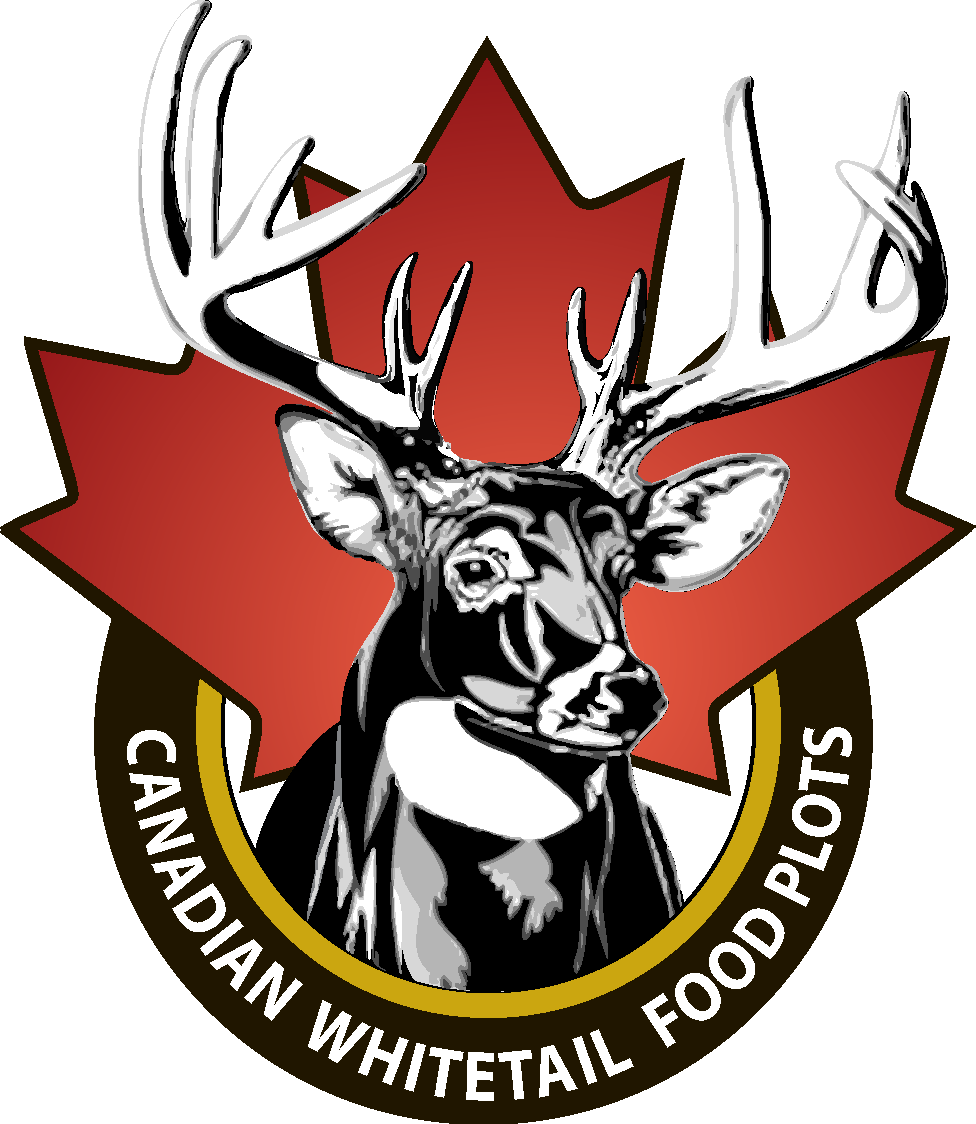Planting a Weed-Free Fall Cover Crop
of Whitetail Institute Imperial Forage Oats Plus and Imperial Fusion
By: John Cristinziani
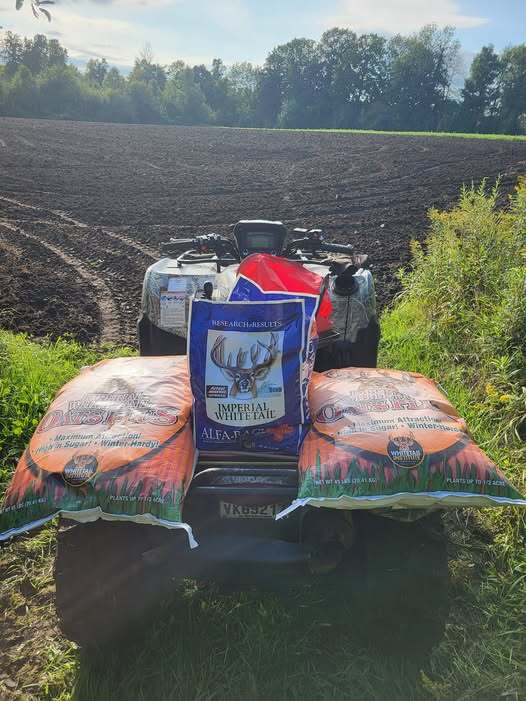
Whitetail deer enthusiasts and land managers understand the importance of year-round nutrition for maintaining healthy deer populations and supporting skeletal mass and antler growth, body weight, and overall herd health. One of the most effective ways to achieve this is by planting a fall cover crop that doubles as a high-value forage source.
A mix of Imperial Forage Oats Plus, Imperial Clover and Imperial Chicory (found in the Imperial Fusion Blend) planted in mid-August to mid-September offers an ideal solution, providing both immediate and long-term benefits for whitetail deer while improving soil health for future plantings.
If you have ever tried to grow perennials during the spring in May or June, you quickly realized the frustration of having to deal with intense nuisance weed competition in your plots. Unfortunately, the ideal spring planting season for perennials also coincides with the peak of weed season in Canada. Now don’t get me wrong, deer readily eat hundreds of varieties of natural growing weeds some of which have excellent nutritional values but those pesty weeds are definitely competing with the plants that you are trying to grow and are all fighting for the same soil nutrients. If they are not dealt with, they will affect the growth of your clovers, chicory and alfalfa perennial plants.
Because herbicides are illegal to purchase in Canada unless you are licensed for them, dealing with those weeds can be maddening or even cause the plot to fail. Below are some tips that I can offer that may prove helpful in at least minimizing weeds in your perennial plantings. I will even offer you a weed-free planting strategy solution that I have been using for years on my own properties.
First and foremost, tilling depth is a huge factor when it comes to weeds. Not all of us as deer managers are farmers and many are new at this game. Some of us are not as well equipped as others so we often rely on the help of neighboring farmers for help with our tillage needs. Farmers do things their way and they are used to spraying their crops to control weeds so they are more or less attentive to tilling depths. For our purposes, a depth of 3 to 4 inches is more than adequate for the planting of any of our Whitetail Institute seed blends. The deeper the soil is tilled, the more bad-weed seeds are lifted out of the soil and brought to the surface where they will then receive water and sunlight and therefore encourage their growth.
If your budget allows you to, another good tip is to add more than the required amount of seed when planting any Perennial plot. You cannot do that with Annual plantings as the root competition with annual plants will stunt the growth of your annual plantings if you over-seed them. But with perennials, more seed is always welcome as it helps to choke out more of the weeds.
Lastly, mowing your perennials in early June and late July is always an excellent and cost-effective way of controlling any weeds that may come up in your perennial plots. It may not prevent weeds, but it will certainly avoid existing weeds from producing additional seeds which will eventually cause a more intense weed issue. Mowing avoids expensive and hard to come by herbicides which are never good for your soil nor for the wildlife feeding in your plots. Those same plants that you are spraying with chemicals to control weeds are being eaten by the deer and then consumed by you and your family when we harvest those animals. There are enough chemicals in most of what we eat these days, we don’t need to contribute to that if we don’t have to. We only use herbicides if it is absolutely necessary.
Now for those who have tried planting perennial plots in the past in the springtime and during the peak of weed season in Canada from May 1st to end of June unsuccessfully and dealing with aggressive weed competition, here is the solution!
By planting a late summer cover crop or a sometimes-called ‘’nurse crop’’ of Forage Oats and Clovers/Chicory, this will help to minimize weeds and produce a top notch and highly attractive and nutritious annual plot all while next spring’s perennials of clovers and chicory are quietly growing beneath the protection and coverage and shadows of the Forage Oats. You see, when planted in late summer, the bulk of the weed season is already behind us. This is why most deer managers and hobby farmers look like professional farmers planting highly successful late summer annual plots in late July or through the month of August of brassica and turnips and sugar beets and radishes etc... With weed season being just about over by mid-August to mid-September, annual crops come up nicely with a good rainfall and will often grow weed free.
Now let’s discuss the cover crop strategy in detail. The planting protocols remain the same for the Oats and perennials. Meaning that good pH between 6.5 and 7.5 are optimal (proper pH is very important to the success of any food plot). After the ground has been adequately tilled and then compacted, we apply the recommended fertilizer for the Imperial Oats Plus. 17-17-17 is applied at a rate of 100lbs per ¼ acre. Then lightly disk or pass a drag over the fertilizer so as to blend it into the soil. Then we broadcast the Forage Oats seed at a rate of 22.5lbs per ¼ acre or slightly less (since this is a cover crop scenario and perennials seeds will be applied next).
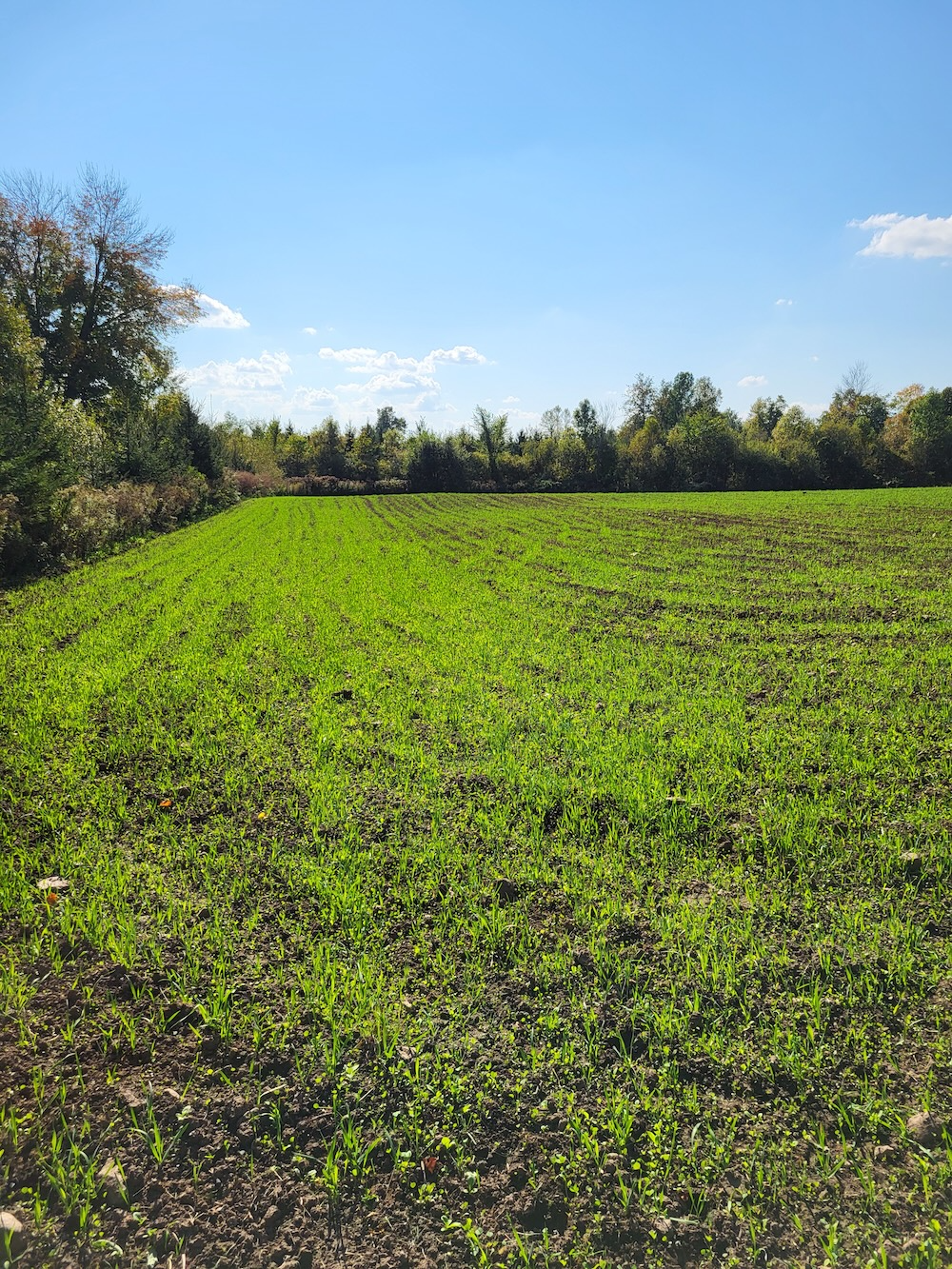
If using a hand spreader, adjust the gate opening to approx. ¼ inch. Then lightly pass a drag to cover the Oats seeds approx. ½ inch deep. AVOID OVER-BURYING the seeds. The next step is where the perennial blend of clovers and chicory is applied (Imperial Fusion) at a spread rate of 3lbs per acre. If you are able to double the amount of Fusion applied, it’s not a bad idea as is always the case when planting perennials, more seed is always better as this will help to choke out more of the bad weeds. Voila...you are done. Do not roll or cultipack the ground once the seeds have been applied.
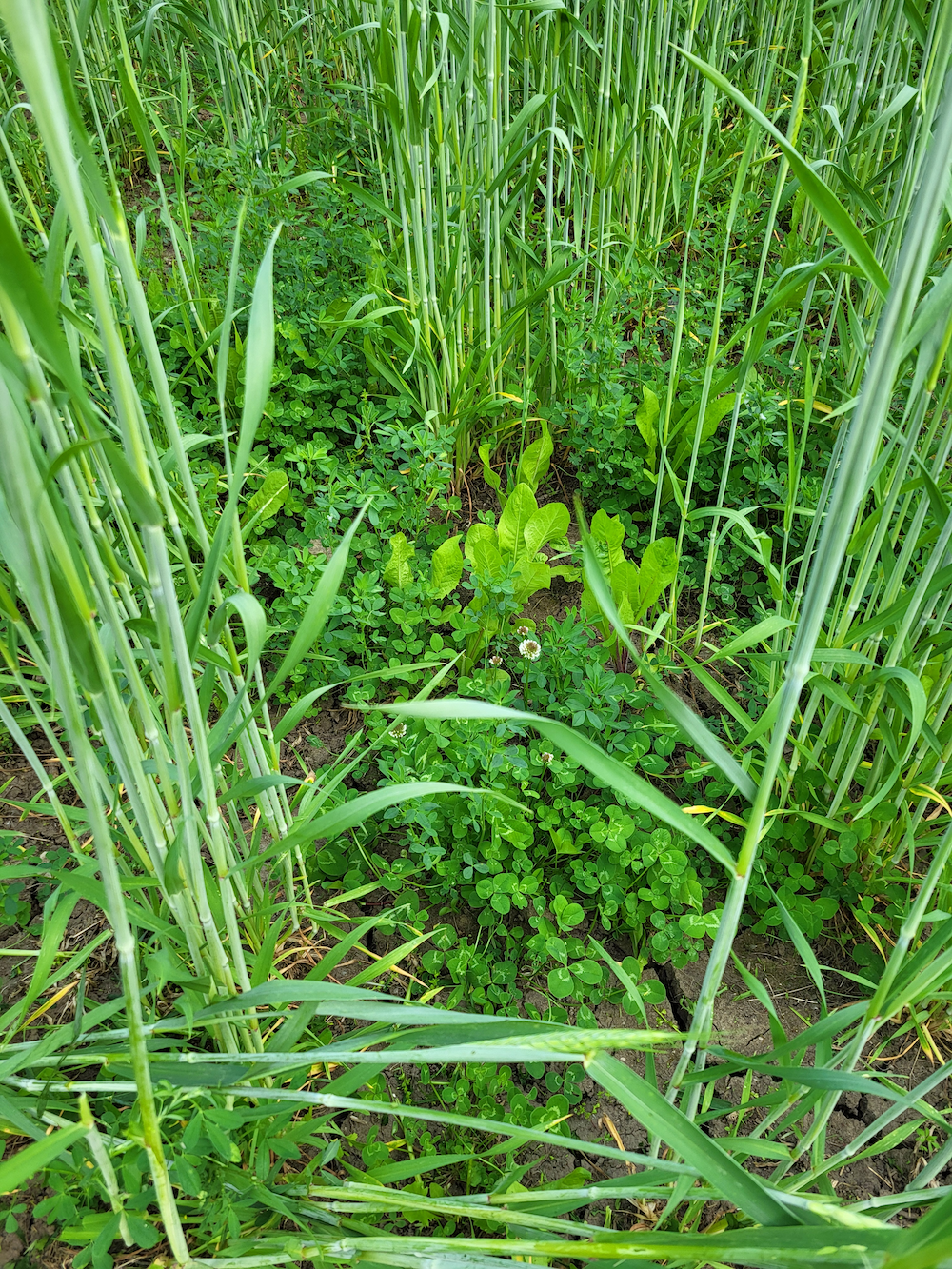
What happens next is pretty cool. All of the plants will germinate at the same time and begin to grow. Eventually, the Oats being an aggressive annual, will take over and outgrow the perennials. This is exactly what we want to happen. You will end up by November with a Forage Oats plot of plants reaching anywhere from 8 to 12 inches tall while your clovers and chicory should get to 3 or 4 inches tall. The deer will be very attracted to the Oat leaves and this will offer you an outstanding annual plot to hunt over for the fall all the while that the Oats and perennials are establishing a good root system.
Eventually with the snow on the way, all of the plants will go dormant for the winter season and all will have already established a strong root system in preparation for the following spring.
Now next spring is where the magic happens! Since the Oats were planted so late the previous summer in August or early September, they never got to grow to where the Oats went to produce seed or went to “head” as the agricultural term suggests. This is why the Oats typically being an “annual” plant, come back for a second growth the following spring along with your clovers and chicory perennials.
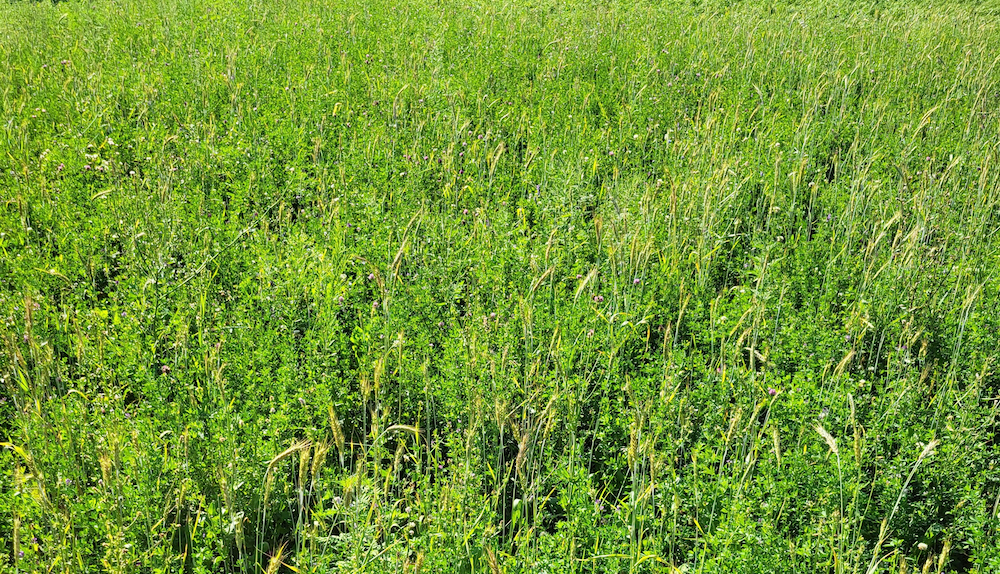
Now because the Oats have created such an aggressive and intricate root system beneath the soil, this is the WOW factor that will impede the majority of the weeds that will be trying to come up to compete with your desired plants in May and June during weed season. Once again, the Oats will take over and quickly outgrow your perennial plants and shade them out. The clovers and chicory will continue to grow nicely but at a much slower rate than the Oats. Then, depending on what province you live in, the Oats will need to be mowed once they start to produce their seeds (heads). The leftover clippings from your Oats cut will dissipate into the soil and provide nitrogen and phosphorus for your clovers and chicory. The perennial plants will then benefit 100% from the soil nutrients which are no longer competing with the Oats that have been mowed and will receive much needed sunlight to quickly grow to maturity. Within 2 or 3 weeks, there will be no evidence that Forage Oats were ever planted in that plot and you will end up with a beautiful luscious and highly successful perennial plot. All of which was grown without the use of herbicides or chemicals and weed free. All that will be needed is the usual yearly maintenance of perennials which is annual fertilization and mowing as per the instructions at the back of the bag.
Bear in mind that there is nothing wrong if you decide to use 100% clover as your cover crop plant of choice such as the Imperial Whitetail Clover mix. Also, if the plot that you have chosen has good drainage after a rainfall, I personally like to use the Imperial Alfa-Rack mix as that blend not only has the variety of clovers and chicory found in the Imperial Fusion mix but it also has Whitetail Institute’s proprietary varieties of WINA-100 alfalfa’s with super high protein levels and which are highly palatable and digestive to deer. Most COOP varieties of Alfalfa are very hard on a deer digestive system as they are difficult to digest and don’t have the high protein levels of the WINA alfalfa.
Lastly, I also like to Frost seed some clover and chicory every year during late March or early April. Frost seeding should be considered as regular maintenance for any perennial food plot. Again, this is another great tip to help choke out eventual weeds in a perennial plot. Adding more perennial “hard” seeds like clovers and chicory and frost seeding them at a time when the temperature is still dropping below zero Celsius at night and thawing during the day will allow seeds to embed themselves into the soil and stay dormant but then germinate before the weeds begin to grow. There are several Frost Seeding articles on the Canadian Whitetail Food Plots website in the LEARN section which you can review https://canadianwhitetailfoodplots.ca/learn/
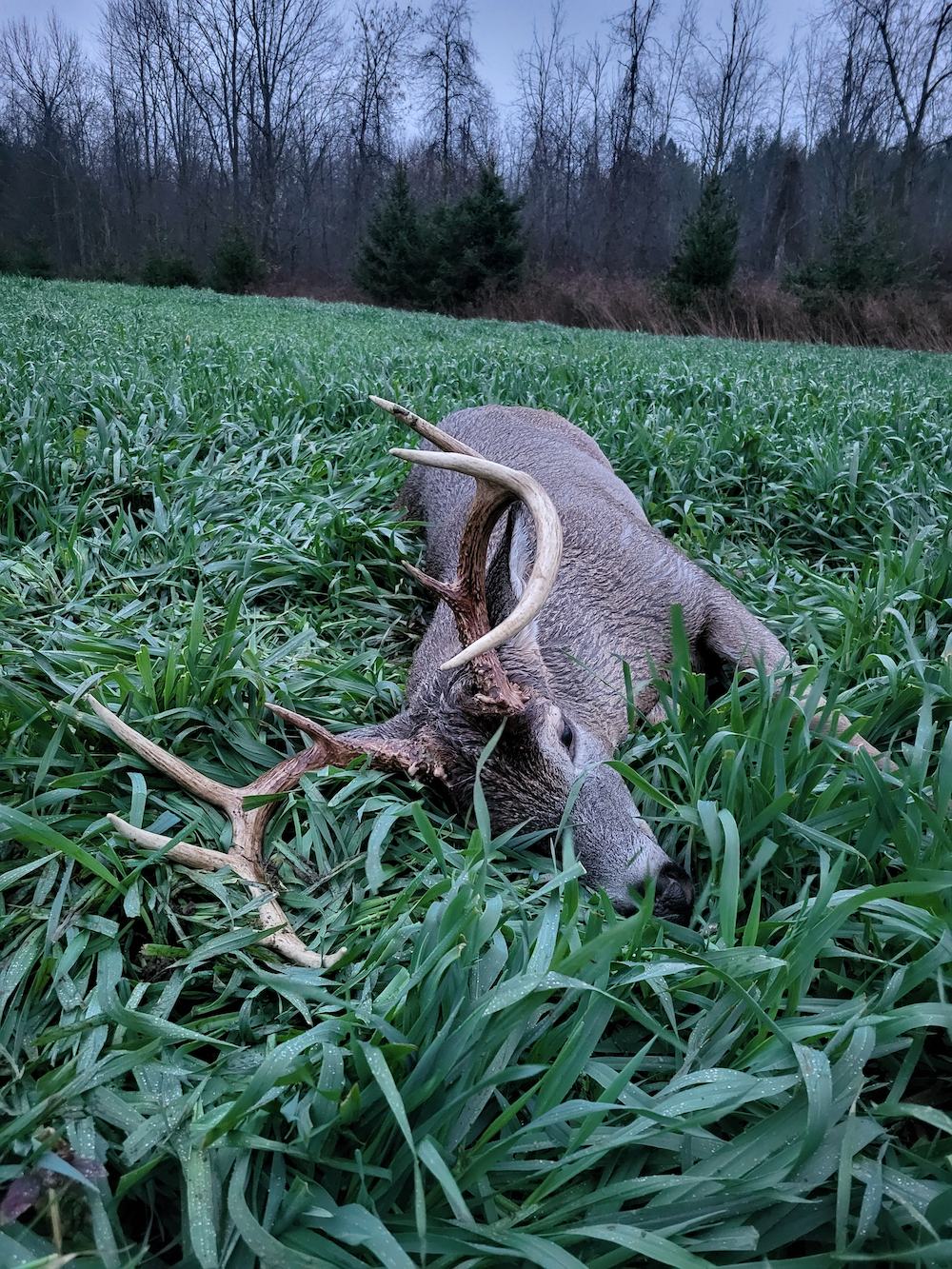
My wife and I harvested our 2 target bucks last year on one of our farms where a cover crop of Imperial Forage Oats Plus and Imperial Alfa-Rack was planted on August 31st. The images of the evolution of that plot, how it grew, the 2 deer that were harvested in the same plot along with the current images of the plot appear in this writing.
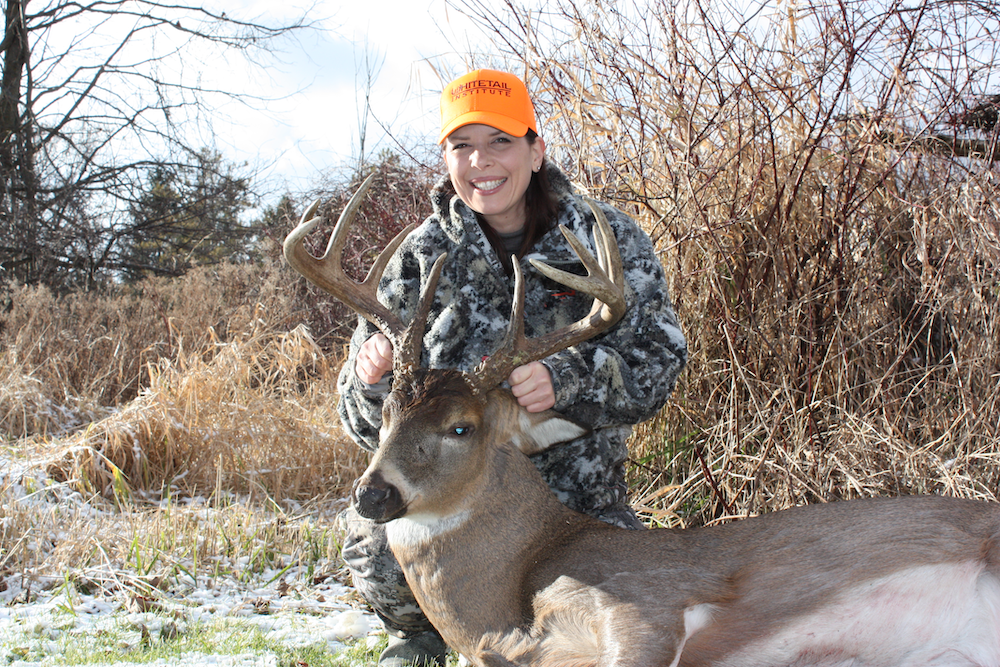
We now make much more frequent recommendations to our food plot customers to impose a late season cover crop planting rather than attempting to grow their perennial plots during the spring or early summer months. Even with the proper herbicide licences, chemicals are very expensive and they spell nothing but badness for the soil and the game using those plots for nutritional purposes. If they can be avoided, they should be at all costs. The nominal cost of purchasing an extra bag or two Imperial Forage Oats Plus easily outweighs the crazy cost of an $800 - $900 gallon of herbicide.
Why Forage Oats, Clovers and Chicory?
Forage Oats: Quick Growth & Cold Tolerance
-
- Fast Establishment: Imperial Forage Oats Plus with Forage Oats and Triticale germinate quickly in early fall, producing lush, tender greens that attract deer almost immediately after sprouting.
- Nutritional Value: Imperial Oats offer very high-protein digestible forage that supports energy needs during the pre-rut and rut periods.
- Cold Hardy: Forage Oats tolerate light frost, staying palatable into late fall and early winter depending on your region.
Imperial Clover: Record High Protein & Soil Health
-
- Protein Powerhouse: Whitetail Institute Imperial Clovers are packed with protein (33%), supporting muscle growth and antler development.
- Nitrogen Fixation: As legumes, clovers naturally fix nitrogen into the soil, improving fertility for future plantings and reducing the need for synthetic fertilizers.
- Multi-Season Use: While Imperial Oats provide quick food in the fall and exceptional attraction, clovers persist year after year, giving deer access to quality forage as soon as the snow is melted.
Imperial Forage Chicory (Perennial)
-
- WINA-100 perennial forage chicory – vastly more tender and palatable to deer than traditional, more waxy textured chicories
-
- Excellent digestibility and mineral content.
-
- Protein Powerhouse: Imperial Chicory are packed with protein (44%), supporting muscle growth and antler development.
- Drought-tolerant, deep-rooted plant for late-season nutrition.
Site Preparation
-
- Soil Test: Always begin with a soil test to check pH and nutrient levels. Aim for a pH of 6.5–7.5 for optimal performance.
- Weed Control: Remove existing weeds with tillage or a non-residual herbicide.
Seedbed Preparation for Oats Cover Crop Planting:
-
- Lightly till 3-4 inches deep. A firm seedbed ensures good seed-to-soil contact, essential for small seeds like clover and chicory.
- Apply the recommended pelletized fertilizer shows at the back of the bag.
- Pass a drag or a roller or cultipacker to firm up the seed bed (try not to skip this step, it is very important to have good seed to soil contact)
- Broadcast the Imperial Oats to a rate of 22.5lbs per ½ acre.
- Lightly pass a drag over the sown Oats for a light cover of earth over the seeds.
- Broadcast the Imperial Fusion mix at a rate of 3.15lbs for ½ acre plot.
Suggestion:
You should Frost seed some additional Imperial Fusion seed onto the plot at a rate of 3.15lbs per ½ acre in late winter or early spring when the ground is still freezing at night and thawing during the day.
Timing
-
- Plant in mid-August to mid-September, depending on your region.
- Ensure there is sufficient moisture for germination—consider timing planting just before good expected rains.
Nutritional Benefits for Whitetail Deer
|
Nutrient |
Forage Oats |
Clover / Chicory |
|
Crude Protein (%) |
12–20% |
33% - 44% |
|
Digestibility |
High |
Very High |
|
Palatability |
Excellent |
Excellent |
Deer will begin grazing forage oats within 2–3 weeks of planting, while clovers provide continuous feed into the spring. This mix supports fall energy needs, winter survival, and spring recovery.
Additional Benefits
-
- Soil Health: Reduces erosion, improves organic matter, and boosts microbial activity.
- Pollinator Habitat: Clovers attract beneficial insects and pollinators.
- Turkey & Small Game Attraction: The mix also benefits other wildlife.
Management Tips
-
- The Forage Oats will dominate early growth providing a very highly attractive and nutritional fall food plot for the deer. When planted at the appropriate time of late summer for your area, the Forage Oats will be approx. 1 foot tall providing a lush green carpet of weed free forage oats leaves which the deer will devour due to its highly attractive.
- In frost-prone areas, oats may rarely winterkill but in most cases will come back the following spring, but clover and chicory will overwinter and regrow in spring.
Use Cases
-
- When planning for a lush and weed free perennial plot for the following spring.
- Used to create a highly nutritional and attractive annual food plot for fall hunting.
Conclusion
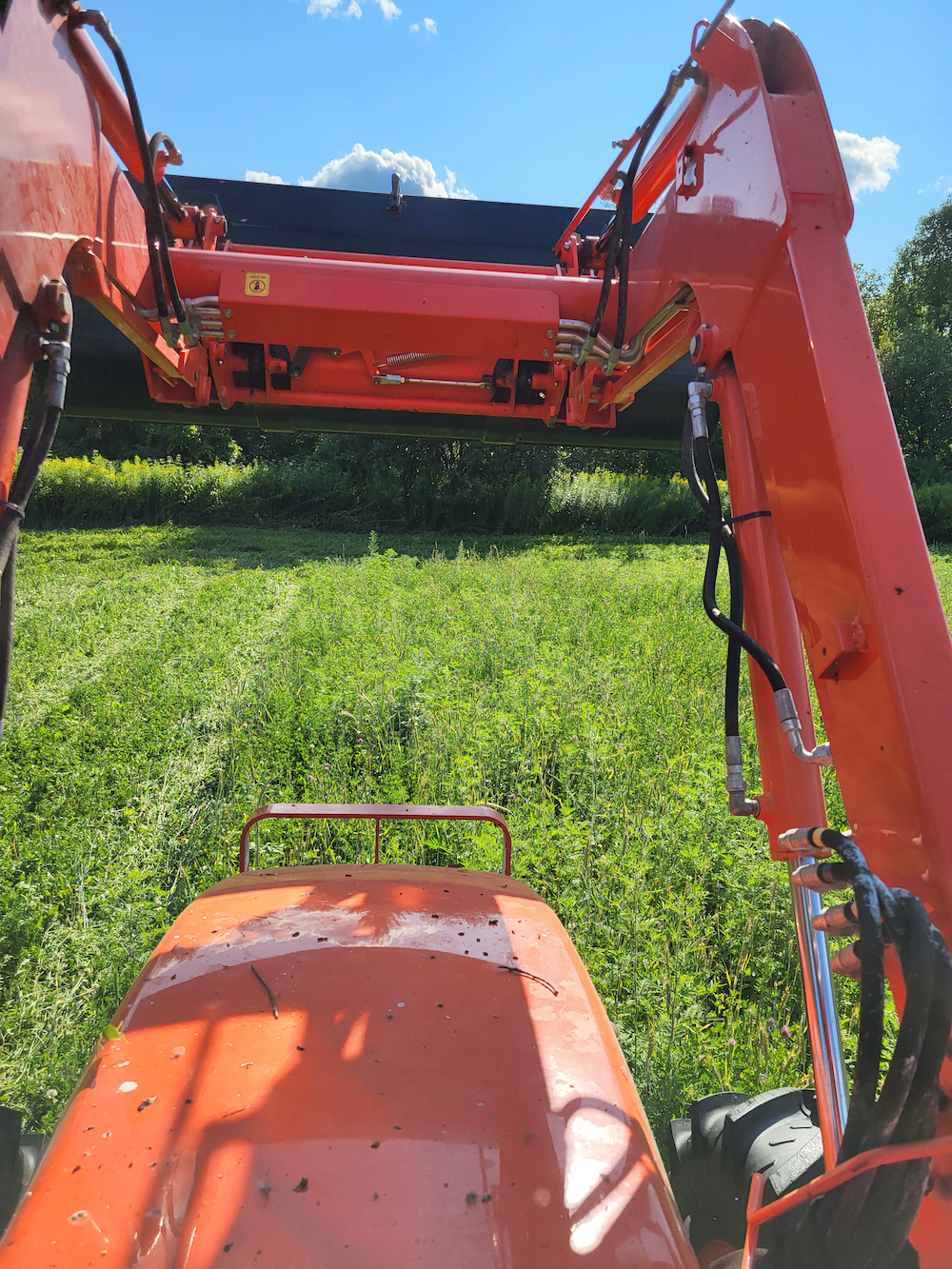
Imperial Forage Oats and Imperial Fusion planted in mid-August to mid-September (depending on your region) offers an excellent triple-purpose solution: it provides immediate fall forage for whitetail deer due to the Forage Oats, it improves the quality of the soil for future plantings and it allows us to grow weed-free perennials without the use of chemicals. Whether you're managing a hunting property, improving habitat, or simply supporting local wildlife, this planting strategy delivers reliable results for both deer and the land and allows you to grow a perennial plot for the following spring with minimal weed competition or even completely weed free.
